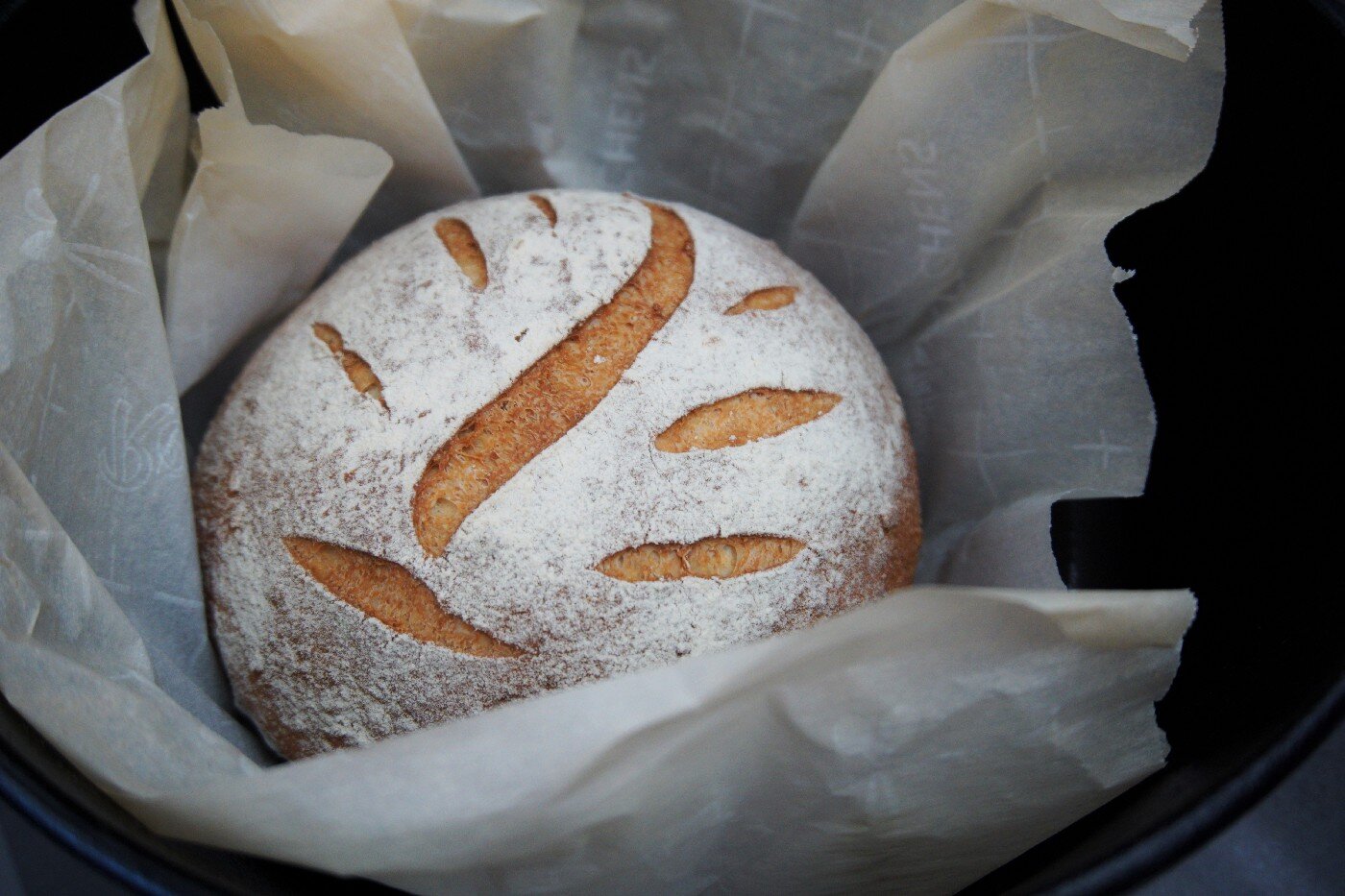The tacit promise of sourdough, and of your commitment to maintaining a starter and baking a loaf, is that you nearly always get bread. Most cooks have known an underbaked cake, overcooked vegetables, or dishes that are over spiced, over salted, or altogether ruined. Sourdough is a world apart; no matter the slip up, you will have bread on your table.
Consider overproofing. If your dough stays too long on the countertop before you transfer it to the refrigerator, it becomes gassy and fragile and will collapse when you move it from bowl or brotform to pot. The dough will be a trick to handle, but it will rise again, not as high and round as it would have, but it will rise in the oven and you will bake good bread.
What about the opposite, underproofing the dough? By this I mean leaving it for too little time on the countertop and ultimately baking it before it has fully risen. In this case, there will not be as many gas bubbles as you need to help the dough fully expand, which will make the finished loaf smaller and denser than it would otherwise be. The loaf may also be underbaked because heat more slowly permeates an underproofed loaf. Still, your bread will be fine.
How about forgetting to salt your dough? Here it helps to understand that the role of salt in bread baking is to slow fermentation. So if you forget to add salt, which someday you will, your dough will rise round and high more quickly than usual and you may initially feel pleased with yourself. In the refrigerator, the dough will rise almost beyond the limits of the brotform or bowl, and you may start to feel queasy; what you are seeing is the yeast taking their usual ride, but without any brakes on.
In the end you will bake your dough, perhaps still unaware of your error, but then you will taste the bread and you will know. You will faintly remember forgetting to add salt. You will, of course, have bread, but it will not be bread with any flavor and you cannot salt bread after the fact. Not even a layer of salted butter will disguise this error. The best path forward for an unsalted loaf is to make bread crumbs that you can toast and salt and use to embellish all sorts of dishes. In a way, this counts as having bread.
What if you forget to score the loaf before baking? When you first put dough in the oven, rapid gas production pushes the dough up and out in a final rising burst before the crust hardens. Scoring controls the direction of the rise and prevents the surface of the dough from tearing open. If you forget to score the loaf, your bread will not rise as round or high as it would have and it will tear, making it less beautiful, but you will undeniably get flavorful bread.
What if your starter dies and, without realizing it, you make a dough using DEAD STARTER? This happened to me when I was a young baker never imagining the demise of my starter. So I went on baking, more than once, with starter than had perished or nearly so. The loaves I baked were small and dense. There were large holes throughout the crumb as if greedy moths had taken up residence, yet I did get bread, which in my ignorance I served and nothing bad happened.
All this is to prove what an ally sourdough is, helping to put food on the table through every imaginable distraction and misstep. Honoring the intersection of talent and luck, sourdough reminds us that we are not less worthy when our efforts take a turn any more than we are masterful when in the sun-bright bliss of morning we turn out a golden loaf: glossy and well risen, flawlessly scored, and baked to precision.
Copyright, Ellen Arian, Ellen’s Food & Soul




